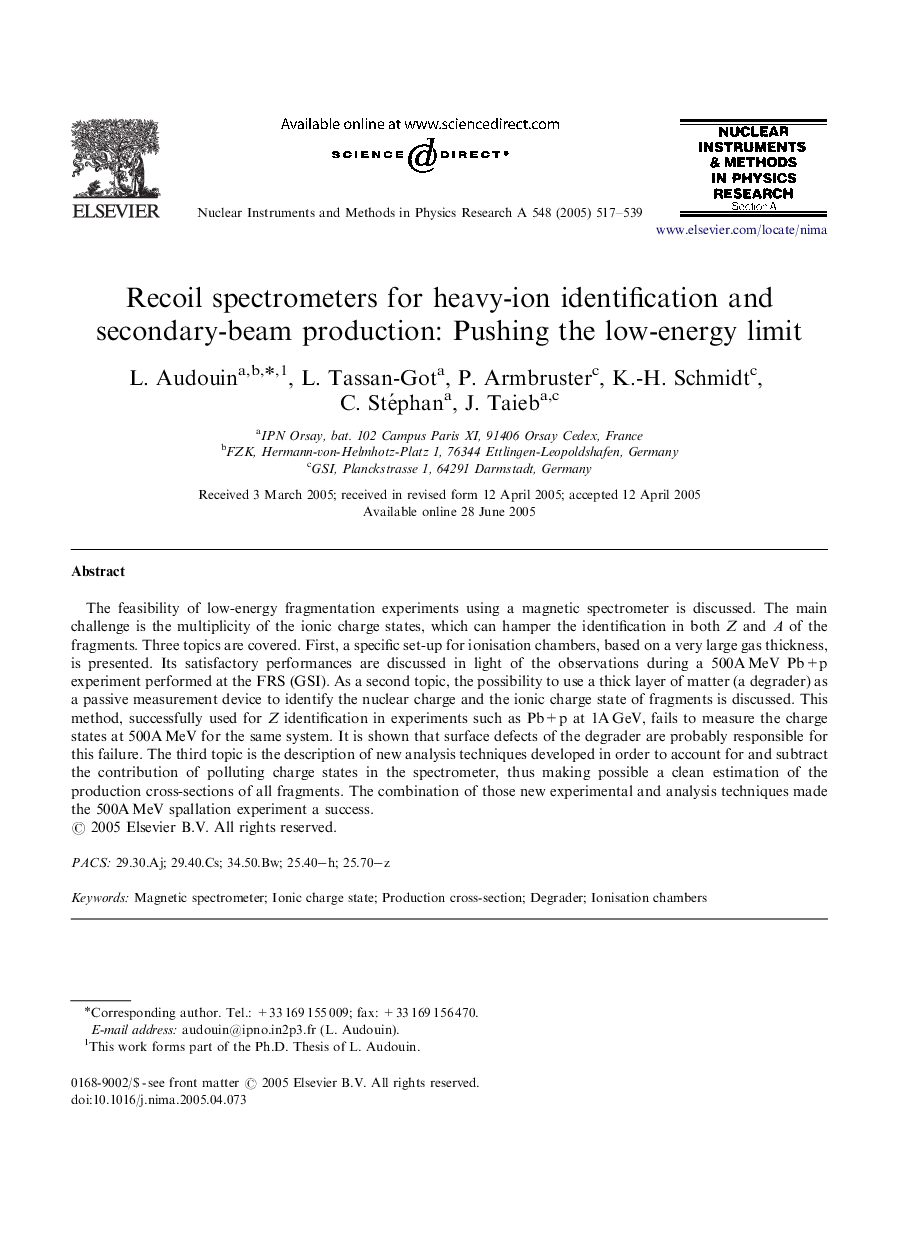| Article ID | Journal | Published Year | Pages | File Type |
|---|---|---|---|---|
| 10716095 | Nuclear Instruments and Methods in Physics Research Section A: Accelerators, Spectrometers, Detectors and Associated Equipment | 2005 | 23 Pages |
Abstract
The feasibility of low-energy fragmentation experiments using a magnetic spectrometer is discussed. The main challenge is the multiplicity of the ionic charge states, which can hamper the identification in both Z and A of the fragments. Three topics are covered. First, a specific set-up for ionisation chambers, based on a very large gas thickness, is presented. Its satisfactory performances are discussed in light of the observations during a 500AÂ MeV Pb+p experiment performed at the FRS (GSI). As a second topic, the possibility to use a thick layer of matter (a degrader) as a passive measurement device to identify the nuclear charge and the ionic charge state of fragments is discussed. This method, successfully used for Z identification in experiments such as Pb+p at 1AÂ GeV, fails to measure the charge states at 500AÂ MeV for the same system. It is shown that surface defects of the degrader are probably responsible for this failure. The third topic is the description of new analysis techniques developed in order to account for and subtract the contribution of polluting charge states in the spectrometer, thus making possible a clean estimation of the production cross-sections of all fragments. The combination of those new experimental and analysis techniques made the 500AÂ MeV spallation experiment a success.
Keywords
Related Topics
Physical Sciences and Engineering
Physics and Astronomy
Instrumentation
Authors
L. Audouin, L. Tassan-Got, P. Armbruster, K.-H. Schmidt, C. Stéphan, J. Taieb,
